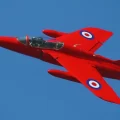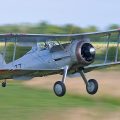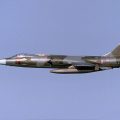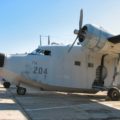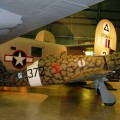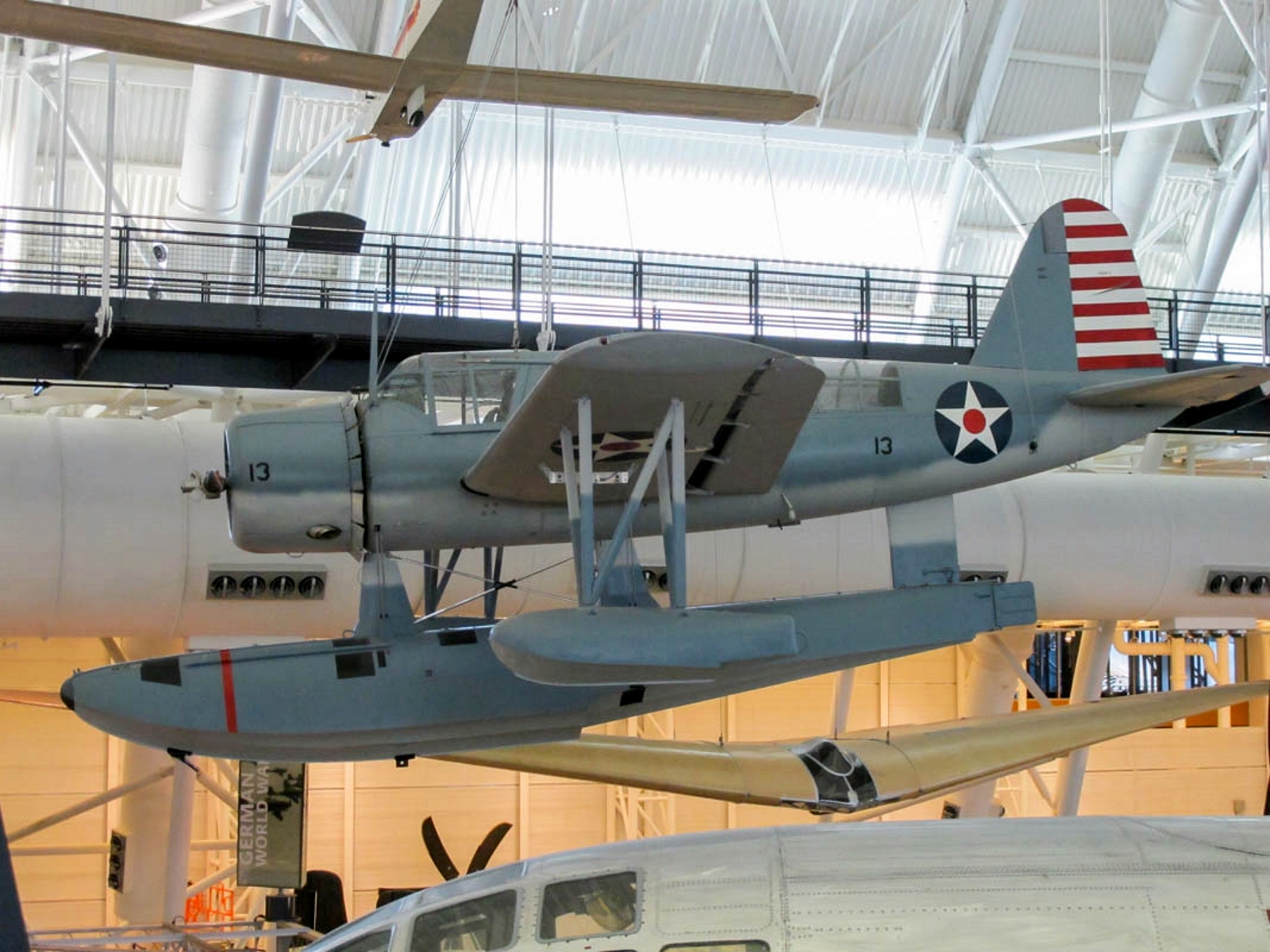
Vought OS2U Kingfisher | |
|---|---|
| Země | SPOJENÉ STÁTY |
| Roli | Pozorovací plovák |
| První let | 1938 |
| Postaven | 1519 |
Tá Ledňáček Vought OS2U was an American catapult-launched observation floatplane. It was a compact mid-wing monoplane, with a large central float and small stabilizing floats. Performance was modest, because of its light engine. The OS2U could also operate on fixed, wheeled, taildragger landing gear. The OS2U was the main shipboard observation aircraft used by the United States Navy during World War II, and 1,519 of the aircraft were built. It served on battleships and cruisers of the US Navy, with the United States Marine Corps in Marine Scouting Squadron Three (VMS-3), with the United States Coast Guard at coastal air stations, at sea with the Fleet Air Arm of the Royal Navy, and with the Soviet Navy. The Royal Australian Air Force also operated a few Kingfishers from shore bases.
| Vought OS2U-3 Kingfisher Walk Around | |
|---|---|
| Fotograf | Vladimir Jakubov |
| Lokalizace | Národní letecké a kosmické muzeum |
| Fotografie | 100 |
Související sady:
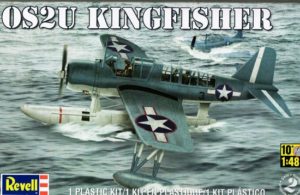
| Kingfisher Walk Around | |
|---|---|
| Fotograf | Jose Brito |
| Lokalizace | Neznámé |
| Fotografie | 17 |
Najděte sady na eBay:
| Vought OS2U-3 Kingfisher Walk Around | |
|---|---|
| Fotograf | Unknow |
| Lokalizace | Neznámé |
| Fotografie | 18 |
Technické specifikace Vought OS2U Kingfisher
Vought OS2U Kingfisher byl americký pozorovací plovákový letoun, který sloužil ve druhé světové válce. Byl startován katapultem z bitevních lodí a křižníků a mohl operovat i na souši s pevným podvozkem. Měl výraznou středoplošnou konstrukci s velkým centrálním plovákem a malými stabilizačními plováky. Byl také vybaven vztlakovými klapkami deflektoru a svěšenými křidélky pro zvýšení vztlaku a snížení přistávací rychlosti.
Některé technické specifikace OS2U Kingfisher, založené na různých zdrojích.
| Specifikace | Hodnota |
|---|---|
| Výrobce | Vought |
| Roli | Pozorovací plovák |
| První let | 1938 |
| Počet postavených | 1,519 |
| Posádky | 2 (pilot a radista/střelec) |
| motor | Hvězdicový motor Pratt & Whitney R-985-4 Wasp Junior, 450 koní |
| Rozpětí křídel | 10,97 m (36 stop) |
| Délka | 10,24 m (33 stop a 10 palců) |
| Výška | 4,6 m (15 stop a 1 palec) |
| Hmotnost (prázdný) | 1 870 kg (4 123 liber) |
| Hmotnost (naložená) | 2 540 kg (5 600 liber) |
| Maximální rychlost | 264 km/h (164 mph) |
| Cestovní rychlost | 188 km/h (117 mph) |
| Rozmezí | 1 610 km (1 000 mil) |
| Strop | 3 780 m (12 400 stop) |
| Zbrojení | One 7.62 mm (0.30 in) Browning M1919 machine gun for the pilot One or two 7.62 mm (0.30 in) machine guns on a flexible mount for the radio operator/gunner Two 45 kg (100 lb) bombs or two 147 kg (325 lb) depth charges |
Vought OS2U Kingfisher byl všestranný a spolehlivý pozorovací plovákový letoun, který sloužil americkému námořnictvu a jeho spojencům během druhé světové války. Navrhl ji Rex Beisel, který vytvořil také slavnou stíhačku Vought F4U Corsair. Kingfisher byl kompaktní středoplošník s velkým centrálním plovákem a dvěma menšími plováky na křídlech. Mohl také operovat ze země s konvenčním kolovým podvozkem.
Kingfisher měl jeden hvězdicový motor Pratt & Whitney R-985, který produkoval 450 koní, což mu dávalo maximální rychlost 264 km/h a dolet 1 300 km. Posádku tvořila dvoučlenná posádka: pilot a pozorovatel/střelec. Pilot měl pevný dopředu střílející kulomet, zatímco pozorovatel měl jeden nebo dva pružné kulomety na kruhové lafetě. Kingfisher mohl také nést bomby nebo hlubinné nálože pro protiponorkové mise.
Kingfisher byl spouštěn katapultem z bitevních lodí a křižníků a mohl být vyzvednut jeřábem nebo přistáním vedle lodi. Plnil různé role, jako byl průzkum, řízení námořní palby, záchrana sestřelených letců a protiponorkové hlídky. Používala jej také americká pobřežní stráž, americká námořní pěchota a několik zahraničních leteckých sil, včetně královského námořnictva, australského královského letectva a sovětského námořnictva.
Kingfisher se vyráběl v letech 1940 až 1945 a celkem bylo vyrobeno 1 519 kusů. Z provozu byl vyřazen v roce 1959 Kubou, posledním provozovatelem. Je považován za jeden z nejúspěšnějších pozorovacích plovákových letounů všech dob.
Views : 6255

